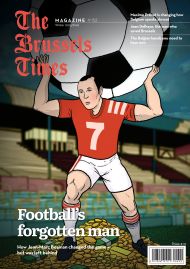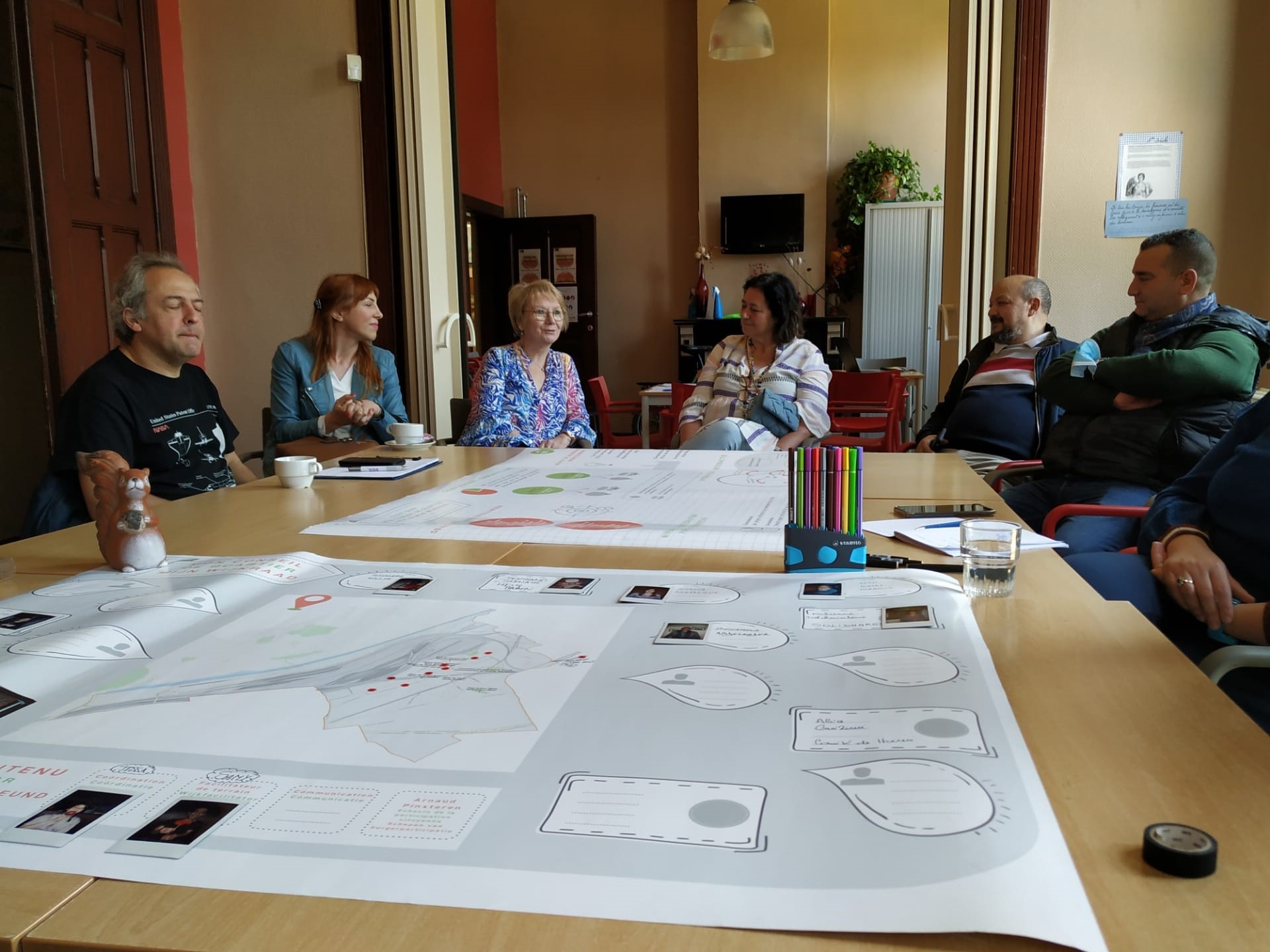All too often, politicians and people are set against each other with depressing results, not least in the city of Brussels, where interminable building projects have aggravated tensions across the community. However, the capital is trying to change this dynamic with its citizen participation initiatives, schemes that aim to get locals more involved in the decision-making processes.
“If you involve the public from day one, you will get a better result,” says Arnaud Pinxteren, the City of Brussels alderman for citizen participation and urban renovation. He says that when people are empowered with information, they contribute ideas, even becoming spokespeople for projects.
What are citizen participation initiatives? These are engagements between political authorities and citizens that take many forms: public meetings before and during the implementation of projects, surveys, neighbourhood councils and online platforms.
The Brussels versions follow the September 2019 ‘Ostbelgien model’ in German-speaking Belgium, where citizens’ assemblies made up of at most 50 people met for three weekends over three months. These panels invited experts to help them understand a chosen topic or proposed initiative and to draft independent policy proposals.
In citizen participation initiatives, residents can become panel members by being chosen by lot to join a citizens’ assembly: meaning they are more likely to attract female or younger members. Open neighbourhood meetings tend “to reach the usual suspects: Belgian, male, older, with a university education and homeowners,” Pinxteren says. A more diverse group of people will have more chance of pushing through a project that lasts.
Indeed, Pinxteren, from the French-speaking political party Ecolo, says the key to participation is to include the widest possible range of citizens so everyone feels they can influence the decisions that concern them.
Speaking in the Brucity building, the capital’s new offices near De Brouckère, Pinxteren explains how citizen participation worked with Good Move, the mobility plan for the Brussels-Capital Region, which was put in place in August 2022. Fellow politicians, like Bart Dhondt, the Flemish alderman of mobility and public works, would meet with people five or six times a week, talking to shopkeepers, families and schools to hear their concerns, like where to park a car or pick up a child easily from school.
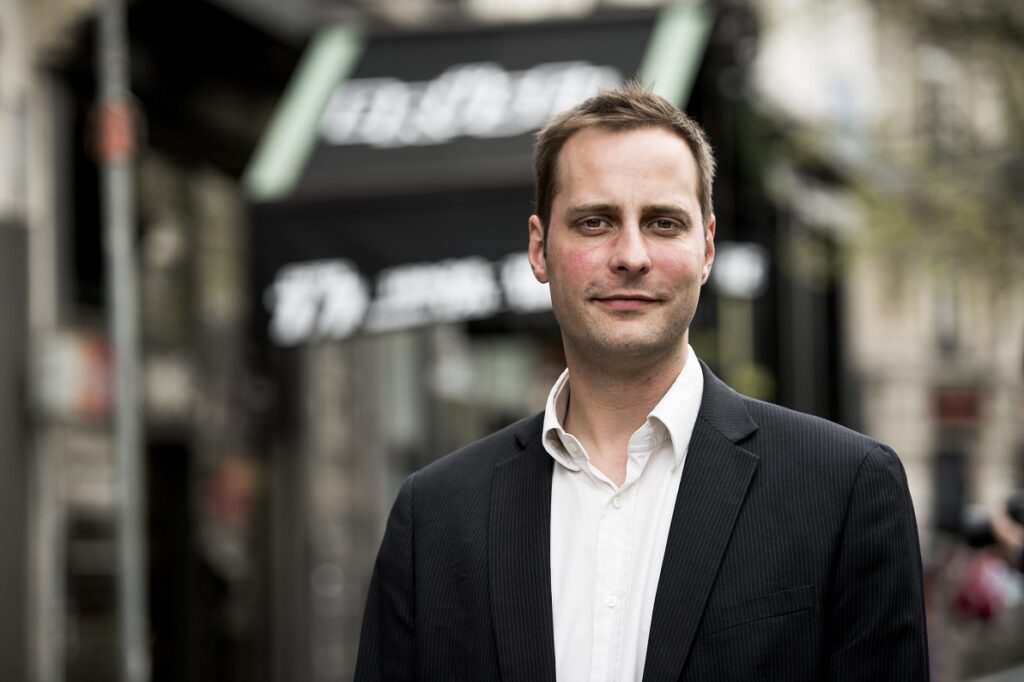
Arnaud Pinxteren, the City of Brussels alderman for citizen participation
“Good Move – aiming to make neighbourhoods more accessible, pleasant and safe for all modes of travel – showed us that finding common ground is more important than convincing,” he says. “Today we continue to have lots of talking and dialogue with citizens and shopkeepers, one year after the plan was implemented in the capital.”
Good Move followed previous citizen-driven initiatives including Picnic the Streets, which led to the Brussels pedestrian zone; cafefiltre, a movement fighting for clean air around schools; and the rise in repair cafes where citizens mend their appliances together instead of buying new ones and play streets – where traffic is banned on certain days, especially in summer, so children can play safely.
“As a city, we can go in a certain direction at a certain speed thanks to the existence of these initiatives,” Pinxteren says. “For Good Move, we gave inhabitants a chance to pinpoint problematic areas in terms of mobility to reach a shared diagnosis, resulting in the circulation scheme we know today.”
Pinxteren points to two recent citizen initiatives that were particularly successful: Laeken’s Place Saint Lambert and the Pavillon Omer Vanaudenhove in the Cinquantenaire park, with meetings taking place in shops, schools and city offices. “The Laeken square was completely abandoned but had great potential. People came up with the idea of transforming it into a place where they could meet, sit, relax and have a drink,” he says. As for the Pavillon Omer Vanaudenhove, which was damaged by fire in December 2021, the local community suggested restoring it, and the city is now spending €300,000 to do so.
Citizens in the cockpit
Those schemes were relatively small, but there are big public transport projects that show why citizen participation is essential, Pinxteren says.
One is the much-delayed Metro 3 link between Albert and Bordet, via the Gare du Midi and the Gare du Nord. “The metro was a political decision made by politicians,” Pinxteren says, noting that it has faced opposition since its inception and is currently on hold.
By contrast, the new Tram 10 that will connect Neder-Over-Heembeek, the northernmost part of Brussels commune, to the city centre in just over ten minutes has moved ahead quickly. It follows citizen participation events that brought local voices into the decision-making. “The citizens were in the cockpit and the steering committee from the start,” Pinxteren says.
“The framework was clear, we needed a tram,” he continues. “But everything after that was up to them: the track, stops and how we would organise public space around the tram line like bike paths and trees. It was also remarkable to see that people on the representative panels became almost automatic ambassadors for the project, so they had to answer to their surroundings, neighbours and shopkeepers.”
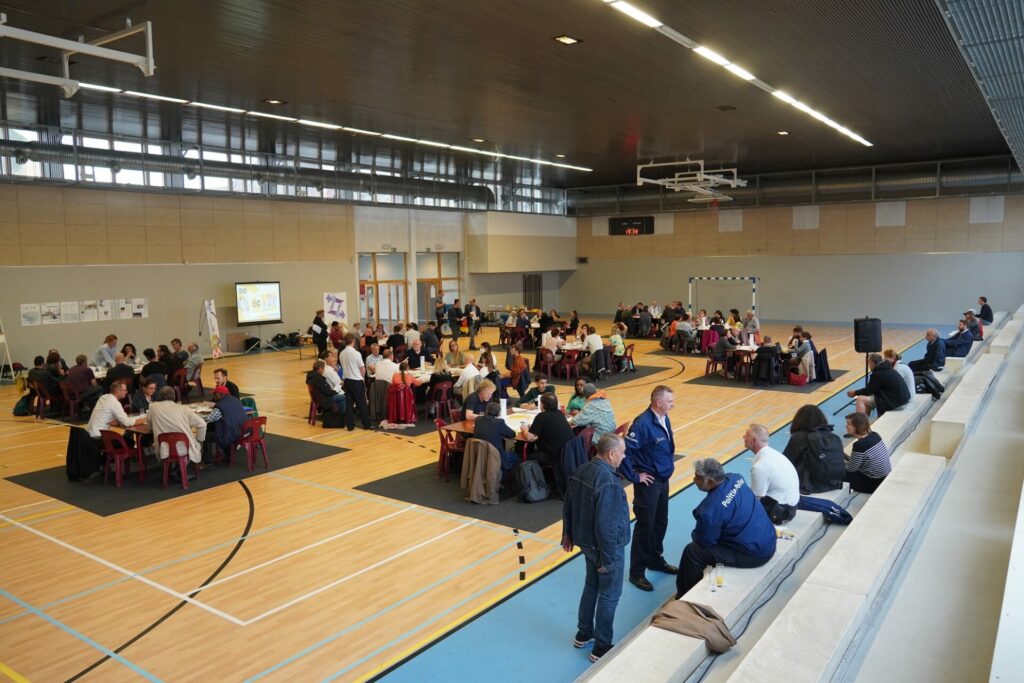
A citizen participation gathering
The process included on-site walks, as well as virtual reality headsets or screenings to show residents how their new tram would look and affect their neighbourhood. All this helped allay concerns and head off criticism. “When individuals can visualise a common goal, they are more inclined to share their arguments and provide positive feedback,” Pinxteren says.
Pinxteren insists that citizen participation does not mean the absence of planning. “There is always a certain framework established first by politicians elected by the people. If that didn’t exist, the people screaming the loudest would always get their way,” he says.
He adds that it is never realistic to strive for 100 percent participation or to imagine that everyone will be on board from the start. “This criticism often resurfaces and is frequently used as an excuse to disagree with something,” he says.
On the other hand, he is more conciliatory than veteran Brussels politician Pascal Smet, who says, “Sometimes you need to make people happy against their will." If a project faces too much flak, it should not be pursued, Pinxteren says. “Politicians must acknowledge that they are exposed to lobby groups, activists and opinions that push them in certain directions,” he says.
Closer to communities
One of Pinxteren’s main roles is to bring politicians to the people, himself included, by being present in Brussels neighbourhoods as much as possible.
In this capacity, he has regularly deployed a bicycle/desk contraption known as the Babbeleir. The cargo bike is brought into a public space, like the Grand Place, and unfolded as a mobile meeting table, where he and others inform and consult citizens on issues like the new circulation plan or the redevelopment of school streets.
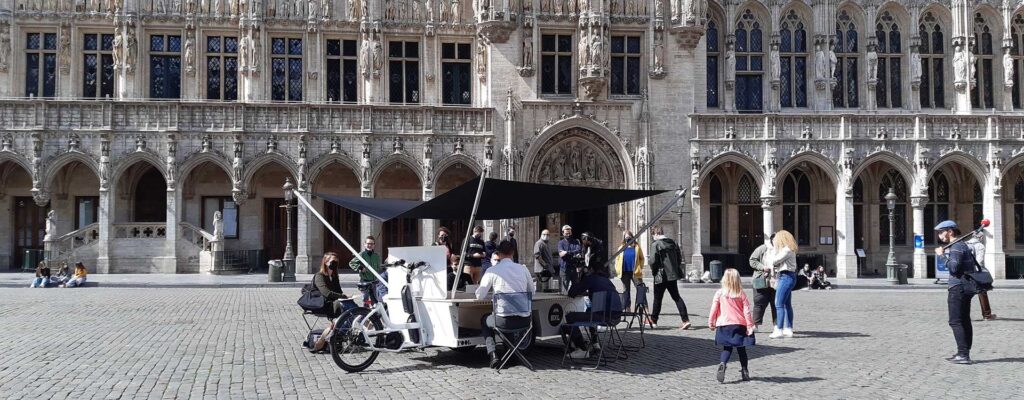
The Babbeleir bicycle/mobile meeting table
Engagement also means recognising citizens who get involved. The Brucity entrance hall recently had an exhibition of 40 photos of “inspiring citizens” helping to pioneer initiatives like youth projects, training workshops and even neighbourhood compost schemes. “While we only had to select 40 participants, we could have easily included 200; our goal was to increase visibility for these individuals and their work,” Pinxteren says.
Politicians should think more like user experience designers when it comes to interaction with citizens, he says, offering tools for input and opposing viewpoints such as Frequently Asked Questions/FAQ sections on websites. “Keeping diversity alive and all profiles on board,” is a key challenge in citizens initiatives,” Pinxteren says, adding that local inequities become more visible in participation processes.
More concretely, €1 million budgets are being released for citizens in Neder-over-Heembeek, Haren, Laeken and the European quarter so that they can have a say in future investments. The principle is that citizens know what is best for their area. Anyone who wants to can submit an idea, ranging from renovating a playground to installing fitness equipment.
Pinxteren says this is more than just giving citizens money and requesting proof of expenditure. It also involves accompanying people in the creative and execution process. “Cities must eliminate hurdles like administrative tasks,” he says. “They should facilitate the process of applying for subsidies, or direct citizens to the right departments in the city.”
The success of citizens’ initiatives has also been enabled by the change in people’s mentality, Pinxteren says. “They are more organised and mobilised. We try to stay in touch offline and online. With the Babbeleir, we are present in many different areas of the city, and we engage in Facebook and WhatsApp groups.”
In addition, people are more verbal than they were ten years ago, he says. “They pick up the phone and call us directly. This means you have engaged citizens and it is why we created aldermen of citizens’ participation in the first place.”
Pinxteren says he wants to make citizen participation part of the legal process towards, for example, the creation of new schools. In the short term, a best practice guide is being prepared to showcase popular citizen participation initiatives and encourage people to share experiences.
Reaching an agreement in this way takes time. The Good Move meetings gave citizens the chance to share their day-to-day experiences for at least a year before the first idea of a circulation scheme was drafted.
But Pinxteren is proud that the Neder-Over-Heembeek tram is making progress. “The citizen participation process began in 2019 and today we are laying tram rails. We noticed that citizens are concerned about the length of the works, but we can show that things can progress swiftly. I can even sense a bit of enthusiasm,” he says with a smile.
